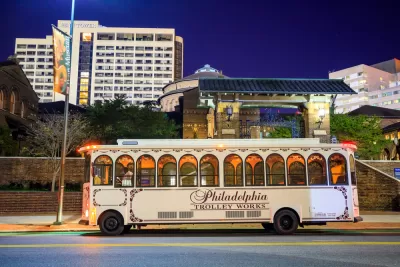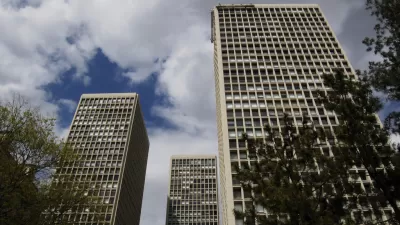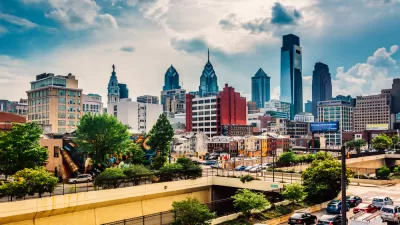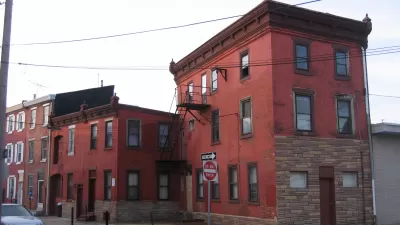Researchers from the Federal Reserve Bank of Philadelphia find evidence of displacement in Philadelphia's gentrifying neighborhoods.

[Updated January 10, 2016] "Researchers at the Community Development Studies & Education Department at the Federal Reserve Bank of Philadelphia found that Philadelphia’s gentrifying neighborhoods have lost low-cost rental units at *more than five times the rate of nongentrifying neighborhoods," according to a press release on the website of the Federal Reserve Bank of Philadelphia.
The press release explains Philadelphia's unique situation among large U.S. cities: "Although the city’s housing costs are relatively low compared with its mid-Atlantic peers, Philadelphia continues to have the highest poverty rate among the ten largest U.S. cities."
Using U.S. Census data, the study "found that between 2000 and 2014, the city lost 23,628 units with rents that fell below the $750 threshold." The study also noticed a geographic trend for the loss of affordable units: "These losses were especially acute in gentrifying neighborhoods, such as University City and the Graduate Hospital neighborhood."
Noting the economic consequences of housing constraints for low income residents, the study also calls for policymakers to take action to support the economic mobility of Philadelphia residents.
[The Federal Reserve Bank of Philadelphia contacted Planetizen to submit the following correction: The original version of this report initially misclassified three gentrifying census tracts as nongentrifying. Additionally, the gentrification type classifications have been corrected. This updated report reflects the corrected analysis.]
FULL STORY: Philadelphia Fed Research Measures Impact of Gentrification on Low-Cost Housing Stock

Maui's Vacation Rental Debate Turns Ugly
Verbal attacks, misinformation campaigns and fistfights plague a high-stakes debate to convert thousands of vacation rentals into long-term housing.

Planetizen Federal Action Tracker
A weekly monitor of how Trump’s orders and actions are impacting planners and planning in America.

In Urban Planning, AI Prompting Could be the New Design Thinking
Creativity has long been key to great urban design. What if we see AI as our new creative partner?

How Trump's HUD Budget Proposal Would Harm Homelessness Response
Experts say the change to the HUD budget would make it more difficult to identify people who are homeless and connect them with services, and to prevent homelessness.

The Vast Potential of the Right-of-Way
One writer argues that the space between two building faces is the most important element of the built environment.

Florida Seniors Face Rising Homelessness Risk
High housing costs are pushing more seniors, many of them on a fixed income, into homelessness.
Urban Design for Planners 1: Software Tools
This six-course series explores essential urban design concepts using open source software and equips planners with the tools they need to participate fully in the urban design process.
Planning for Universal Design
Learn the tools for implementing Universal Design in planning regulations.
Gallatin County Department of Planning & Community Development
Heyer Gruel & Associates PA
JM Goldson LLC
City of Camden Redevelopment Agency
City of Astoria
Transportation Research & Education Center (TREC) at Portland State University
Jefferson Parish Government
Camden Redevelopment Agency
City of Claremont





























